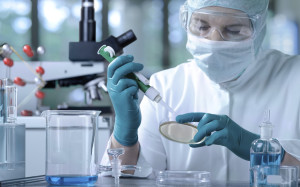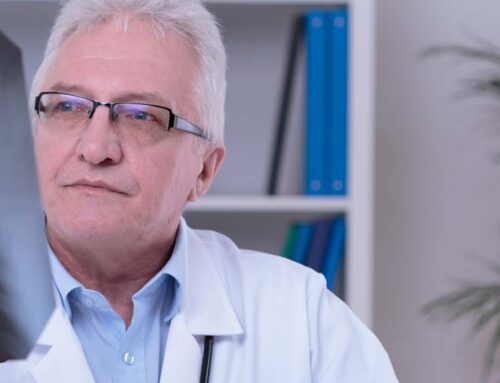Blood! It’s the liquid of life, and now we believe lungs can manufacture it, or at least create components of it. Read on to see the hottest new scientific discovery in lung function!
Surprise, it seems lungs do much more than process our breath! The discovery of new medicine, treatments and technology are always head-line features here at Florida Lung, asthma and sleep specialists. More rare than these discoveries is the revelation of new functions in regular organs.
We thought we had lungs figured out, but now: The latest discovery in lungs has been the realization they have another duty to perform beyond making breath. Due to recent studies, they just might be able to make blood cells.
Exciting New Function Discovered for Lungs

New Fuctions of Lungs Discovered!
Research Scientists at the University of California in San Francisco have discovered that lungs could play a vital role in creating blood.
Much to their surprise, Dr. Mark R. Looney, MD and his research team at UCSF, discovered cells in mouse lungs produce most of the platelets in the mouse’s blood . Likewise, in the mouse study, lungs actually replenish blood-making cells in bone marrow!
Mysteries Unlocked: Revealing the Secret Function of Lungs!
Pulmonologist Mark R. Looney, MD, a professor of medicine and of laboratory medicine at UCSF and his team utilized video microscopy technology in living mouse lungs. What they saw lungs doing surprised them! As reported online March 22, 2017 in Nature, the researchers found that the lungs produced more than half of the platelets in the mouse circulation. They revealed the big discovery in an Article in Nature, an online journal.
They reported they saw mouse lungs were busily producing more than half the platelets in the blood. As you might know, platelets are the components of your blood that cause clotting and stop bleeding.
Platelets are defined as “disk-shaped, ” and they do not contain hemoglobin. Furthermore, they are essential for coagulation and in the maintenance of hemostasis. They are fragments or components of the blood that adhere to areas of blood vessel damage and release chemical signals that direct the formation of a blood clot.
As reported online March 22, 2017 in Nature, the researchers found that the lungs produced more than half of the platelets in the mouse circulation. They revealed the big discovery in an Article in Nature, an online journal.
First Observation: They reported they saw mouse lungs were busily producing more than half the platelets in the blood. As you might know, platelets are the components of your blood that cause clotting and stop bleeding.
Platelets are defined as “disk-shaped, ” and they do not contain hemoglobin. Furthermore, they are essential for coagulation and in the maintenance of hemostasis. They are fragments or components of the blood that adhere to areas of blood vessel damage and release chemical signals that direct the formation of a blood clot.”
Second Observation: As if that platelet production was not enough of a secret, the research team also discovered a previously mysterious pool of blood stem cells. These cells are able to restore blood production when the stem cells of the bone marrow do not make it. Our old thinking is that only the stem cells of the bone marrow, were the principal site of blood production.
Pulmonologist Mark R. Looney, MD, a professor of medicine and of laboratory medicine at UCSF authored the new paper. He stated, “This finding definitely suggests a more sophisticated view of the lungs — that they’re not just for respiration but also a key partner in formation of crucial aspects of the blood…”
Lest you misunderstand the significance of the research, he explained, “What we’ve observed here in mice strongly suggests the lung may play a key role in blood formation in humans as well.”
FLASS Sees Far-Reaching Implications of Studies
Here at FLASS in Orlando, we realize the study could greatly affect patient care. In fact the study could influence the very manner in which we the way we treat some diseases.

Lungs are a treasure chest of mystery!
Observation Number One: For example, many patients suffer from “low platelet counts, or thrombocytopenia.” They live with the daily risk of dangerous uncontrolled bleeding. How will knowing the lungs can make platelets and stem cells be of benefit? Obviously, scientists require more studies to find the practical application behind this research.
Observation Number Two: The study brings new hope to the recipients of lung transplants. “The findings also raise questions about how blood stem cells residing in the lungs may affect the recipients of lung transplants.” Perhaps the secret will be the key to harnessing this new super-power for good!
How Much Blood Can A Lung Make?
In live study, with their specialized imaging, scientists watched as mouse lungs created 10 million platelets per hour. Just the technology to allow the scientists to create the study is a significant advance that might help patients in the future.
In brief, Dr. Looney and co-author Matthew F. Krummel, PhD, a UCSF professor of pathology, refined an imaging technique named “two-photon intravital imaging.” This imaging technology allowed researchers to meticulously visualize the behavior of “individual cells within the tiny blood vessels of a living mouse lung.”
Amazing Discoveries Were Not The Main Points of the Original Study
As so often happens with scientific discovery, Dr. Looney and the research team were studying a different area when they stumbled into the mystery of the blood-making lungs.
They were busy watch the immune system interact with circulating platelets in the little lungs. They had prepped the platelet cells with bright green florescence, the better to see them.
Imagine their surprise when “they noticed a surprisingly large population of platelet-producing cells called megakaryocytes in the lung vasculature.”
These megakaryocytes were the very type of cells that scientists have thought only produced platelets. And until now, scientists thought the production happened primarily in the bone marrow.
Moment of Truth for Researchers
Emma Lefrançais, PhD, a postdoctoral researcher in Looney’s lab and co-first author on the new paper, stated, “When we discovered this massive population of megakaryocytes that appeared to be living in the lung, we realized we had to follow this up.”
And follow it up, they did. As they watched, the scientists saw megakaryocytes in the act of producing more than 10 million platelets per hour within the lung vasculature. Now they realized that this was more than half of a mouse’s total platelet production. For generations we have believed these platelets were only made in the bone marrow. Was this an erroneous assumption?
“…More than half of a mouse’s total platelet production occurs in the lung, not the bone marrow, as researchers had long presumed.”
A Deeper Look At Megakaryocyte Progenitor Cells
The team also saw many previously overlooked megakaryocyte progenitor cells and blood stem cells just hovering outside the lung vasculature, like little doctors on call. And these existed in no small number—The team “estimated at 1 million per mouse lung.”
Here’s the Life Saving Part of the News. The “Newly discovered blood stem cells in the lung can restore damaged bone marrow.”
Migrating, Multi-function “Doctors-on-Call” Blood Cells!
Because the scientists did not understand how the cells could move back and forth between lung and bone marrow, they had to devise a new set of experiments. (Stay with us readers, in the future, the discoveries of these three tests could save the life of your adult child, your grand-child–or perhaps even your own life.)
Transplant Studies Unlock Lung Mysteries!
- First Phase Experiment:
The team transplanted lungs from normal donor mice to recipient mice with fluorescent megakaryocytes. What happened?

New Lung Functions Amaze Researchers!
Very soon, the “fluorescent megakaryocytes from the recipient mice soon began turning up in the lung vasculature.”
What was the discovery? Obviously the platelet producing megakaryocytes in the lung originated in the bone marrow. From there the ambitious cells went to the lungs to do their work, producing platelets.
Guadalupe Ortis-Munoz stated, “It’s fascinating that megakaryocytes travel all the way from the bone marrow to the lungs to produce platelets.”
Like any other scientist, he asks “why?”– and hypothesizes, “It’s possible that the lung is an ideal bioreactor for platelet production because of the mechanical force of the blood, or perhaps because of some molecular signaling we don’t yet know about.”
- Second Phase Experiment:
In a second experiment the researchers transplanted lungs with fluorescent megakaryocyte progenitor cells into mutant mice “patients” with low platelet counts.
As they watched, the transplants dramatically produced a burst of fluorescent platelets. The platelets thus made in the lungs went to work immediately and restored the normal platelet levels in the mouse. The scientists noticed that the normal levels lasted over several months. This was “much longer than the lifespan of individual megakaryocytes or platelets.” Why?
The scientists deduced that “megakaryocyte progenitor cells in the transplanted lungs had become activated by the recipient mouse’s low platelet counts…” Not only did they do their job replenishing the platelets, but they “had produced healthy new megakaryocyte cells to restore proper platelet production.”
Now, dear readers, you will love the human applications you can theorize after reading the next experiment!
- Phase Three: Lungs Hold A Cell Making Party!
In their third test, the researchers transplanted healthy lungs with fluorescently tagged cells into mutant mice. The mutant mice had bone marrow that possessed no normal blood stem cells. Now, what would happen?
The delighted scientists conducted extensive analysis of the bone marrow of recipient mice. They saw that fluorescent cells originating from the transplanted lungs had migrated to the damaged bone marrow. But their work did not stop there.
In the final analysis, the transplanted lungs helped produce more than platelets. They made immune cells such as neutrophils, B cells and T cells!
Obviously, these three experiments teach us that the lungs host a large variety of blood progenitor cells. They make blood progenitor cells and stem cells. Those cells can restock damaged bone marrow. Likewise, the lungs help restore production of many of the healing components of blood.
Dr. Looney, who is also an attending physician on UCSF’s pulmonary consult service and intensive care units stated, “To our knowledge this is the first description of blood progenitors resident in the lung, and it raises a lot of questions with clinical relevance for the millions of people who suffer from thrombocytopenia.”
Here at FLASS, we thank you for reading our blog, and we hope you will return next week for Part II of this amazing study. It turns out lungs might be capable of doing more than we could have ever imagined!





